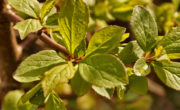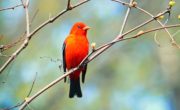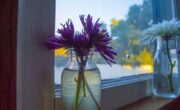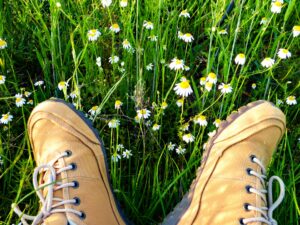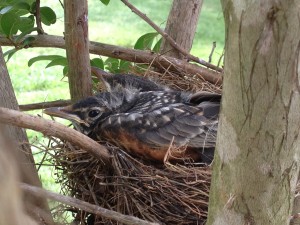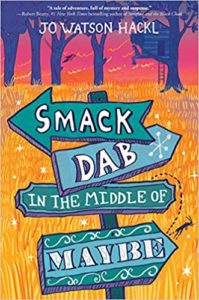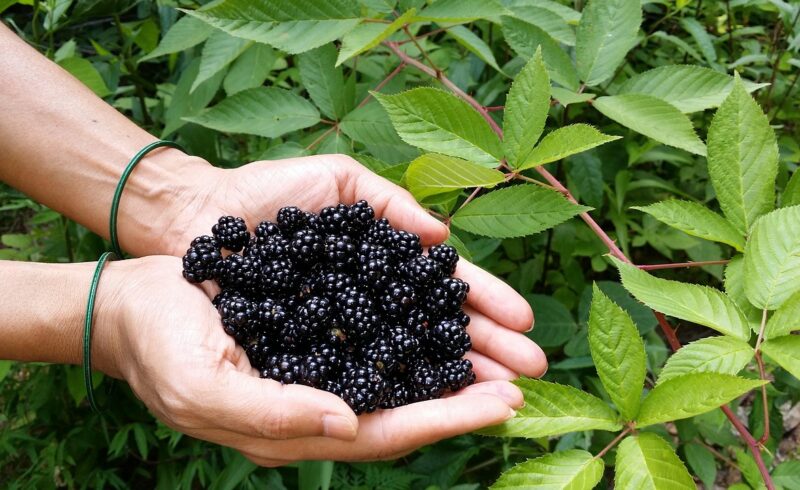
There are many edible plants in the Southeastern United States, and foraging for them can be great fun, if you know what to look for. It’s also handy to have a back-pocket list of edible plants and how to spot them, for camping trips or other excursions when you might want a snack! Here is a list of five of my favorite edible plants that are easy to find in my neck of the woods. As with all foraging, make sure that you positively identify the plant with a reputable plant reference guide and that the plant has not been treated with chemical, or exposed to animal waste or pollution. Always wash thoroughly before eating.
Honeysuckle
Honeysuckle is one of the most well-known edible plants around. The honeysuckle is a vine with white or light yellow flowers. Each trumpet-shaped flower has one fat and one thin petal, and long curving stamens. They are not to be confused with bell-shaped, deep yellow Jasmine flowers. Honeysuckle leaves are flat and pointed, without lobes. The edible part of the honeysuckle is the nectar. Pluck a flower, remove the stamens, and taste the nectar by sucking it through the base of the flower.
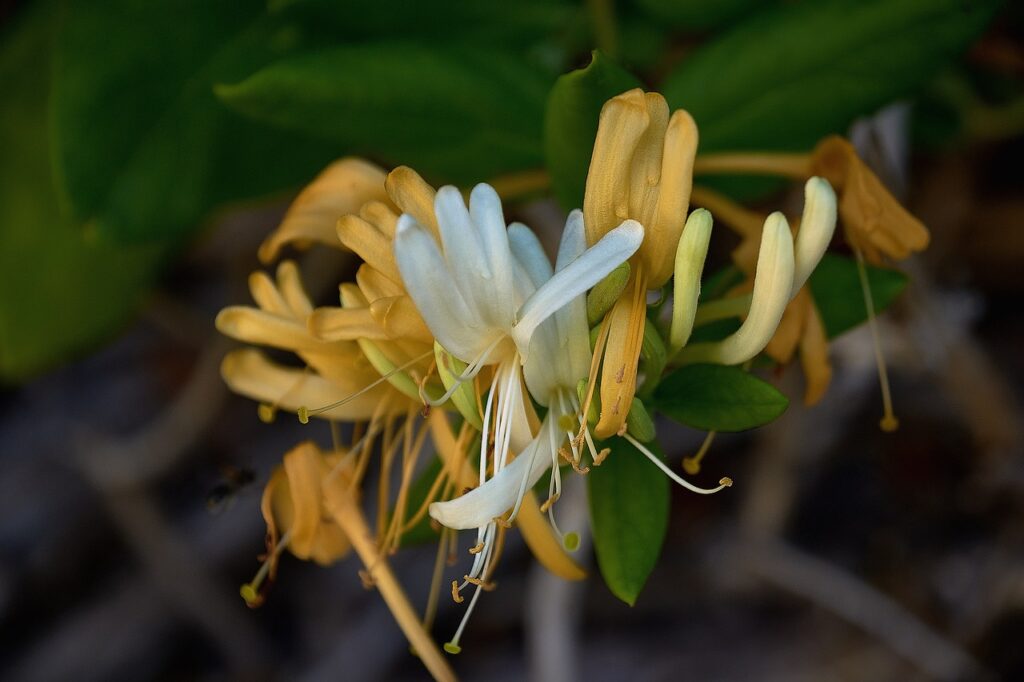
Common Wood Sorrel
Another tasty plant is Common Wood Sorrel. It grows close to the ground, with little yellow star-shaped flowers of five slightly rounded petals each. Its leaves look similar to clover leaves, but they are solid green and smaller than most clover. My favorite edible part of wood sorrel is the leaves. They have a sweet, citrusy flavor. I love to add them to salads.
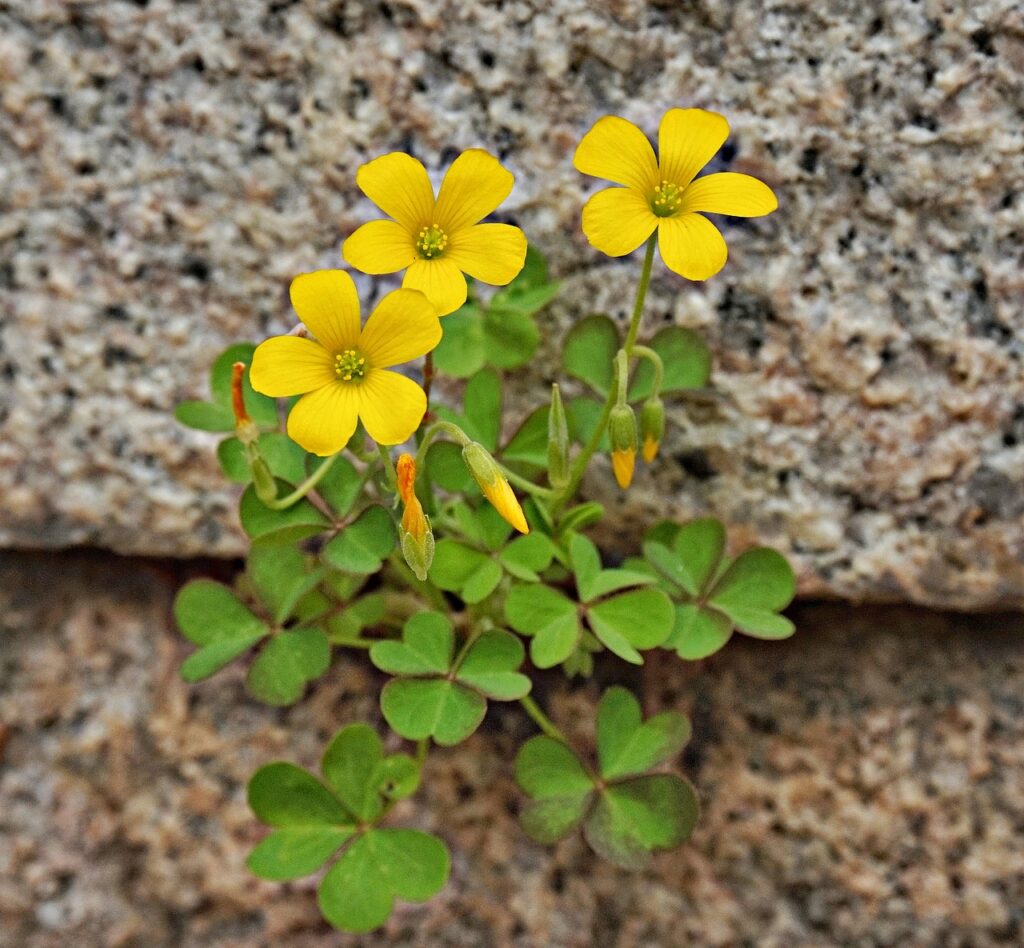
Clover itself is actually edible as well (both the white and red varieties)! Clover leaves are generally eaten raw, and the flowers are used to garnish salads, preserved in jelly, or steeped for tea.
Dandelions
Dandelions are also edible. These familiar “weeds” have large yellow flowers with sprays of thin petals that look like suns, or lions’ manes. Their leaves are large, hairy, and serrated. The leaves, roots and flowers are all edible, but my favorite part of the dandelion is the flower. People sometimes use dandelion petals in salads or to flavor jelly or fermented drinks.
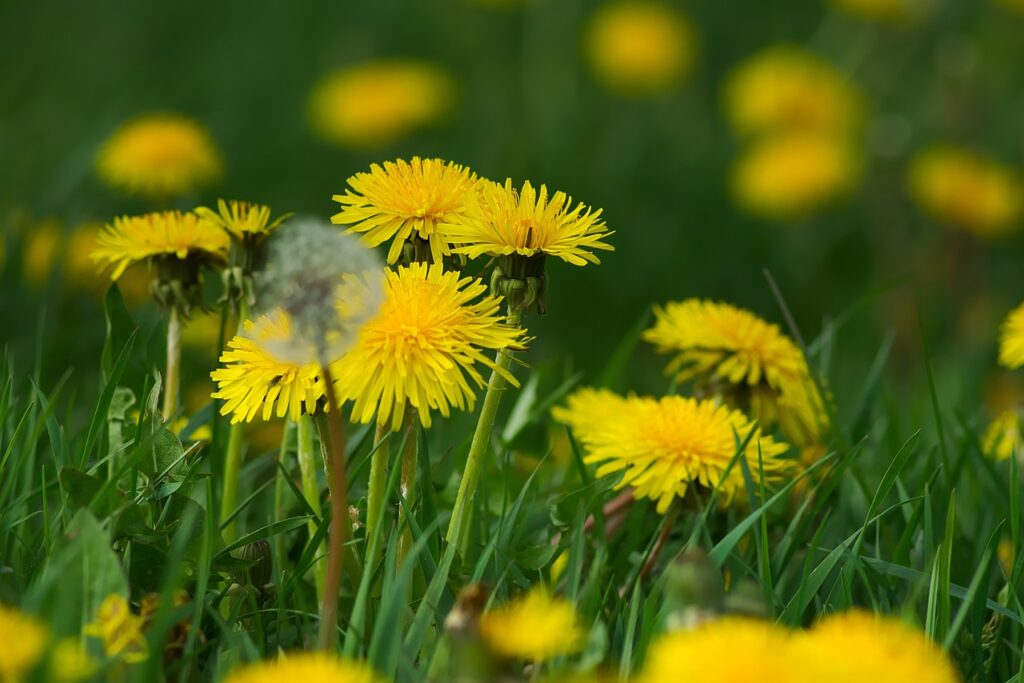
Muscadines
Muscadines are a grape native to the United States. A well-known variety of muscadines is scuppernongs, which have a green color. To my tastebuds, ripe muscadines have a rich, sweet, slightly earthy flavor. Muscadine vines have rounded leaves about the size and shape of your palm, with tightly serrated edges, and prominent veins. Muscadines grow in clusters on the brown vines. Ripe muscadines can, depending on the variety, vary in color from golden, green, or bronze, to a deep purple, almost black. When ripe, they are fragrant, and release more easily from the vine. When you eat them, be sure to spit out the seeds. They can be eaten plain or made into jelly or fermented products.
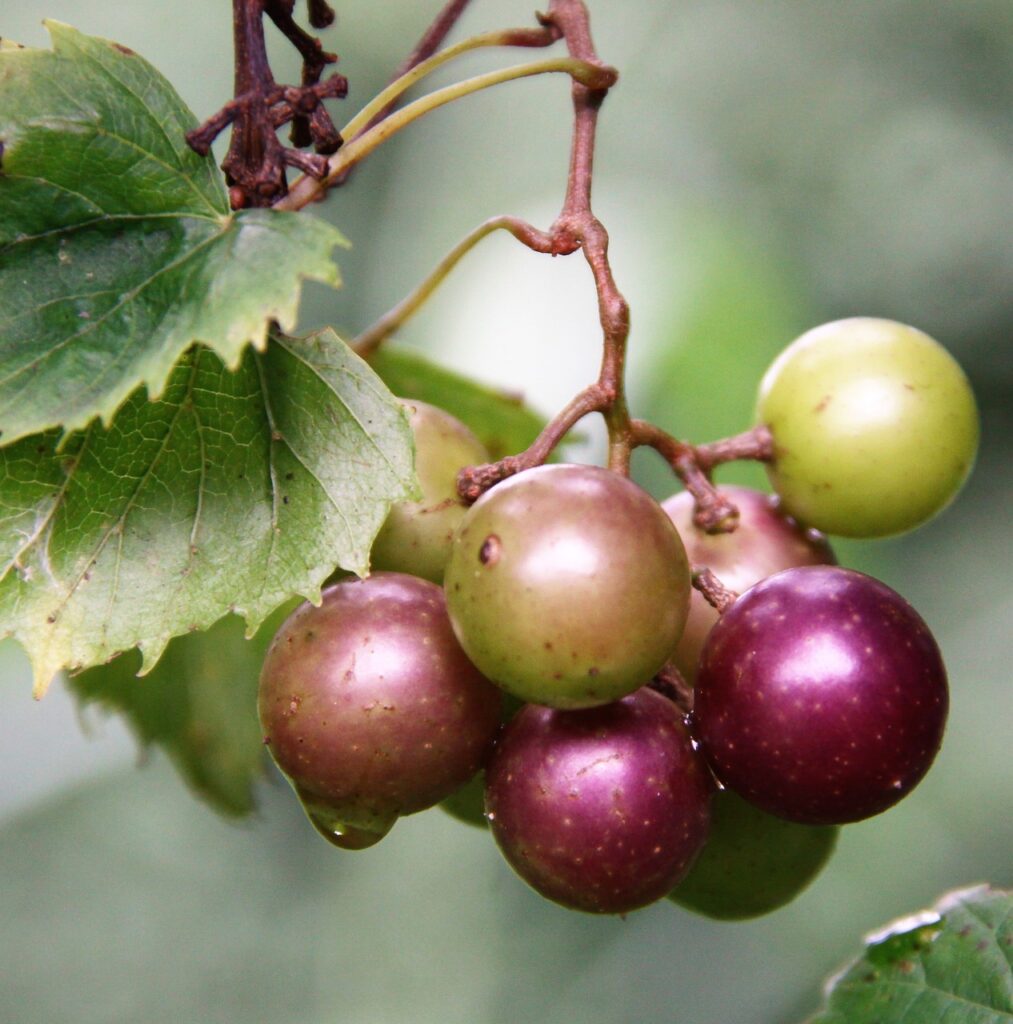
Persimmons
Persimmons are another native fruit in the Southeastern US. They are smooth, and when ripe they are soft to the touch, with a dark or vibrant orange color, like hairless apricots. They grow on trees, and their best season is from September to October. Avoid unripe persimmons. The texture and softness of the fruit is generally the best predictor of ripeness.

Wild Blackberries
Wild blackberries are frequently found by roadsides or along trails. They grow on thorny brambles, so be careful (and prepare to get pricked). The leaves are green, serrated, and oval-shaped. The fruit looks just like store-bought blackberries. While berries are still red they are sour and bitter, but completely black berries are delicious. If they come easily off the stem, they are more likely to be fully ripe. Eat them plain, make them into jam, put them into a cobbler– whatever you please!
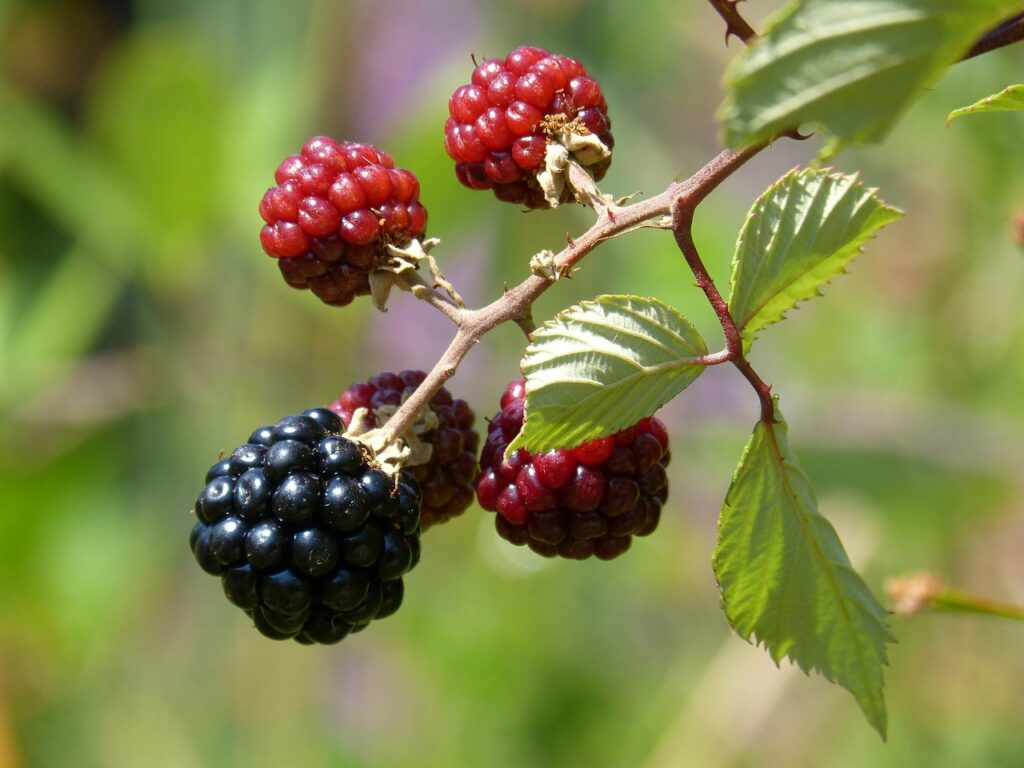
Familiarizing yourself with some of your local edible plants is a fun and rewarding way to connect with your natural surroundings. After a few foraging trips, you may even begin to notice edible plants when you aren’t hunting for them! Be sure to carefully identify and research each plant you find before consuming, however. This list is not meant to be a foolproof safeguard against mis-identification! It is meant as a pointer towards further research that may help you in your foraging adventures. Nature is a wonderful provider. Happy plant-hunting!





